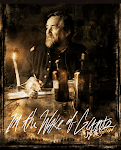 Conrad Wise Chapman’s and John Gadsby Champman's Charleston paintings in a special interactive Web presentation of the Museum of the Confederacy. The Museum of the Confederacy has reproduced the line of the most famous of Civil War art that has the setting of Charleston, South Carolina. There are 31 original paintings by Conrad Wise Chapman and John Gadsby Chapman preserved in the Museum of the Confederacy's vault, are now available as prints.
Conrad Wise Chapman’s and John Gadsby Champman's Charleston paintings in a special interactive Web presentation of the Museum of the Confederacy. The Museum of the Confederacy has reproduced the line of the most famous of Civil War art that has the setting of Charleston, South Carolina. There are 31 original paintings by Conrad Wise Chapman and John Gadsby Chapman preserved in the Museum of the Confederacy's vault, are now available as prints. Conrad Wise Chapman was born in 1842, in Washington, D.C. and is known for his depictions of the Civil War, in particular a series of thirty-one oil paintings depicting the forts and batteries in the area of Charleston, South Carolina.
Conrad Wise Chapman was born in 1842, in Washington, D.C. and is known for his depictions of the Civil War, in particular a series of thirty-one oil paintings depicting the forts and batteries in the area of Charleston, South Carolina. He was the son of John Gadsby Chapman, an Alexandria, Virginia artist and teacher, who moved his family to Rome in 1850 when Conrad was eight. While in Italy, Conrad was trained by his father. Although he was raised in Europe, he was strongly attracted to the Southern United States, and returned in 1861 to Virginia at the age of nineteen to enlist in the Confederate Army as the Civil War began. He was soon branded with the nickname of "Old Rome".
He received head wounds at Shiloh and participated in the siege of Vicksburg. Upon recovery, he returned to Virginia, and then transferred a year later to Charleston. There, on the recommendation of his father's friend General Henry A. Wise, he became part of the staff of General P.G.T. Beauregard. He was soon given orders to create a pictorial record of the Confederate Army's defense of Charleston Harbor, and other forts and batteries of the city.
Chapman completed a series of illustrations between September 1863 and March 1864, which laid the groundwork for thirty-one small paintings. These historical documents are noted for their strong contrasts, deep perspective, and color clarity. In 1864, Chapman had moved to Richmond, Virginia, along with other artists such as portrait painter Edward C Bruce, landscapist John Ross Key, Adalbert Volck, and the political caricaturist, William Ludwell Sheppard. Perhaps never again would Richmond experience such a concentration of creativity.
 Chapman's notable series of thirty-one paintings were painted, however, in Rome, where he had traveled on leave, due to family illnesses. An example would be Fort Sumter Interior, Sunrise, December 9, 1864 (oil on board, Museum of the Confederacy, Richmond, VA). In this work he underscored the tragic dimensions of the bombardment of the fort, contrasting the desolate destruction with the beauty of its natural setting.
Chapman's notable series of thirty-one paintings were painted, however, in Rome, where he had traveled on leave, due to family illnesses. An example would be Fort Sumter Interior, Sunrise, December 9, 1864 (oil on board, Museum of the Confederacy, Richmond, VA). In this work he underscored the tragic dimensions of the bombardment of the fort, contrasting the desolate destruction with the beauty of its natural setting.When Chapman returned to the Confederacy, the war was almost over. After Lee's surrender, he followed the Confederate General John B. Magruder to Mexico to serve the Emperor Maxmillian. During the next seven years his paintings concentrated on that country's landscape, the first American artist to do so. Overall, Chapman's works have great historical significance as Civil War record. In addition, his art is included for the first time, in the category of Southern, as well as American art. He lived primarily in Rome, Paris, and Mexico for the rest of his life, though Conrad Chapman died in Hampton, Virginia, in 1910.
Museum of the Confederacy's Main Page with Chapman Prints Link
Text Source for biographical information on the Chapmans from AskArt.


No comments:
Post a Comment